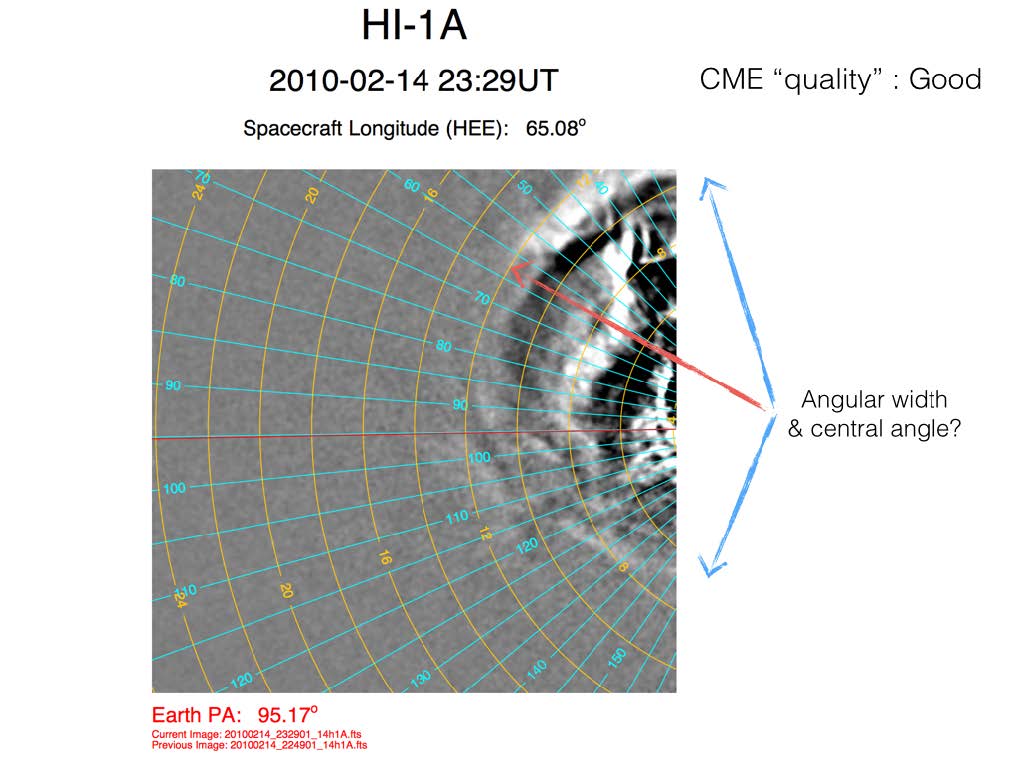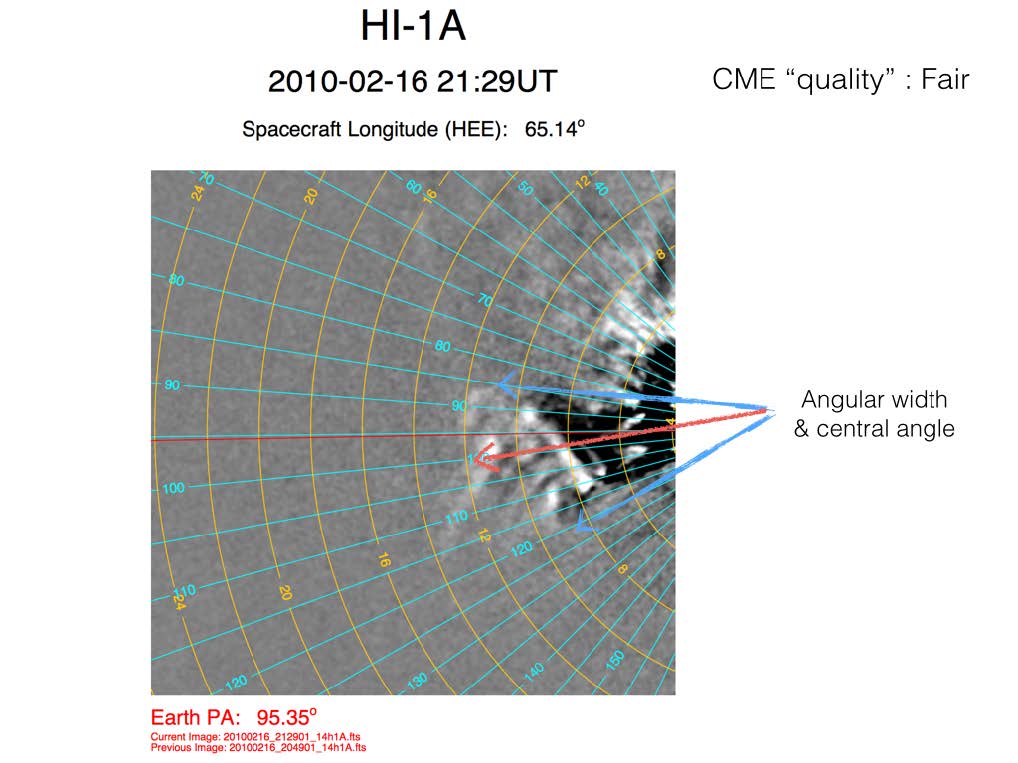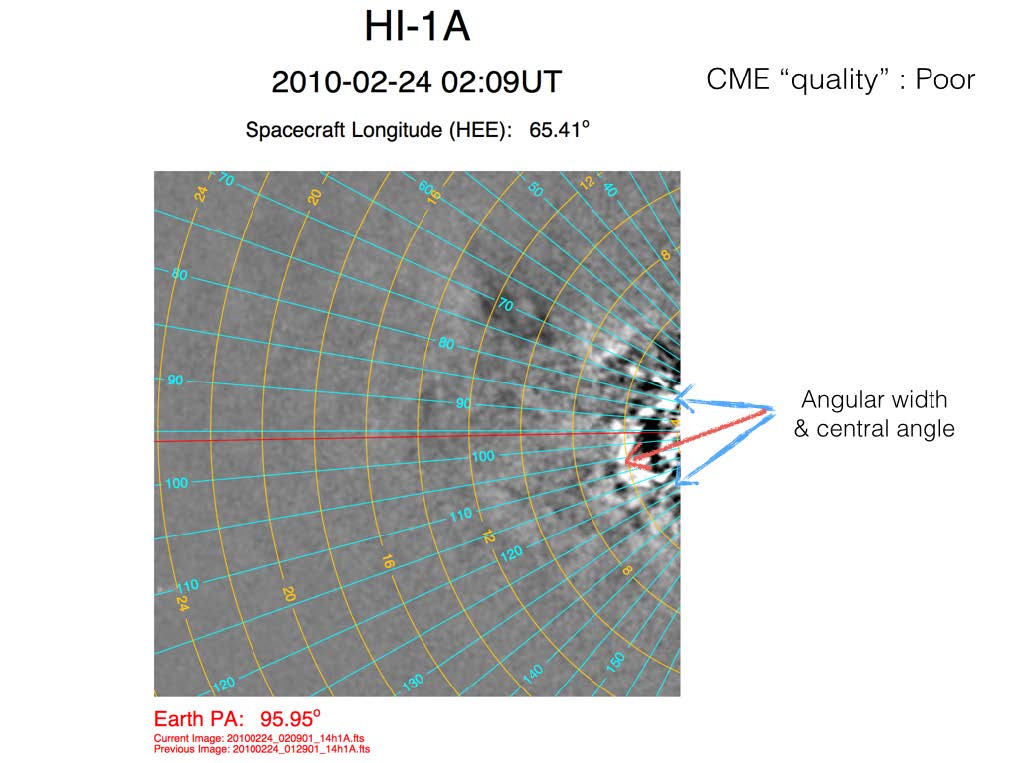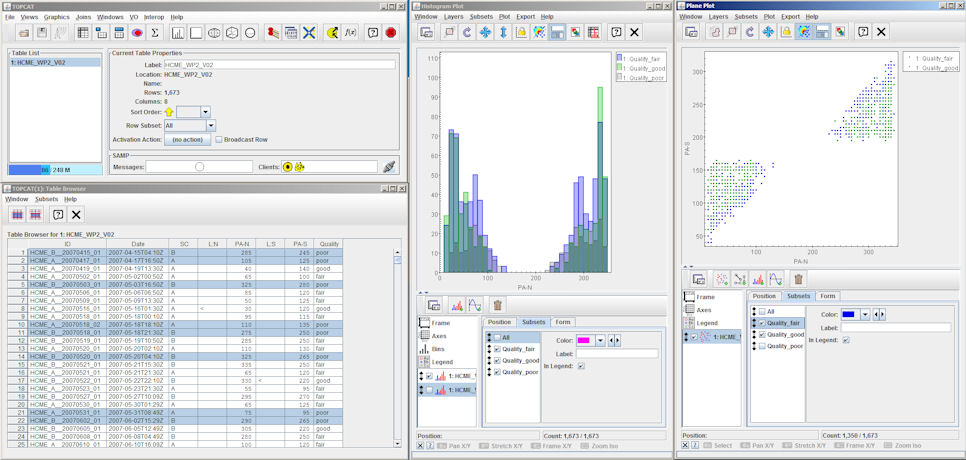HCME_WP2_V05 - Release Notes
The FP7 Heliospheric Cataloguing, Analysis and Technique Service (HELCATS) project capitalises on European expertise in heliospheric imaging built up over the last decade, particularly by lead involvement in NASA’s STEREO mission, whilst also exploiting the vast wealth of long established European expertise in such areas as solar and coronal imaging, as well as the interpretation of in-situ and radio measurements of solar wind phenomena.
The HCME_WP2 is a catalogue of manually identified CME events observed by the STEREO A and B heliospheric imaging cameras. This catalogue underpins the other work within the project by providing a complete list of CMEs detected by HI. These are then assessed and modelled using different techniques as part of other work packages within the project.
Version 05 of this catalogue is the current formal release and covers the period from April 2007 to end of September 2017. Event IDs are tied to the corresponding event and will be retained through different versions of the catalogue even if events are removed or additional events added. Except for the increased coverage the catalogue has the same structure and format as earlier releases including the first formal release - DOI: 10.6084/m9.figshare.1492351.v1
This is version: 05 of the catalogue, released 2018-01-19.
The complete catalogue can be downloaded in several formats (Fixed format ASCII, JSON, VoTable XML)
All formats of the catalogue contain the same eight fields:
| Column | Description |
|---|---|
| ID | The unique identifer for the observed CME. |
| Date [UTC] | The date and time of the first observation of the CME in HI1 camera. Time is specified in ISO8601 calendar segmented format except in the JSON format where the "T" and "Z" delimiters have been removed to aid direct copy and paste into Excel. |
| SC | The observing STEREO spacecraft, (A=Ahead or B=Behind). |
| L:N | Indicator that CME extends beyond the northern edge of the field-of-view (< for sc A, > sc B, blank if edge within FOV). |
| PA-N [deg] | The most northern position angle of the CME span. |
| L:S | Indicator that CME extends beyond the southern edge of the feld-of-view (> for sc A, < for sc B, blank if edge within FOV). |
| PA-S [deg] | The most southern position angle of the CME span. |
| Quality | A measure of "good", "fair" or "poor", that indicates the quality of the CME observation and confidence that the eruption is by definition a CME. It is recommended that Poor events are not used for CME based studies. |
Examples of CME quality
When assessing the quality of the CME observation in HI a measure of "good", "fair" or "poor" is defined. This indicates the confidence that the eruption is by definition a CME. It is recommended that Poor events are not used for CME based studies and these are not displayed by default on the web page (though are included in the downloadable catalogue).
Examples of these three levels of quality assessment are given below as viewed from the STEREO-Ahead spacecraft in February 2010.
In each case the images have been processed to level 1 quality science data, a background has been subtracted, and a running-difference technique applied. CMEs therefore appear as bright regions propagating outward from the Sun (located at 0 degrees elongation). The chosen images list the time of the observation, the spacecraft longitude in Heliocentric Earth Ecliptic coordinates (HEE), the Earth's position angle, and the names of the fits file used in the running-difference subtraction. Overlaid on each image is a set of three arrows drawn to indicate (1) the angular width of the CME (blue arrows) and (2) its so-called central angle (red arrow) which is chosen as the best proxy for fitting the height-time profile of the CME. The central position angles shown in these plots are only indicative. The values associated with particular events are determined during the time-elongation fitting and included as part of the WP3 catalogue.
Good Quality
An example CME observation with quality label `Good', on 14 Feb. 2010 seen in HI-1 from STEREO-
Ahead. The angular width of the CME extends beyond the plane-of-sky as the CME propagates (blue arrows),
so the central angle may be chosen close to 60 degrees (red arrow).

Fair Quality
An example CME observation with quality label `Fair', on 16 Feb. 2010 seen in HI-1 from STEREO-
Ahead. The angular width of the CME extends from approximately 85 { 120 degrees (blue arrows), with an
optimum central angle chosen around 100 degrees (red arrow).

Poor Quality
An example CME observation with quality label `Poor', on 24 Feb. 2010 seen in HI-1 from STEREO-
Ahead. The angular width of the CME extends from approximately 80 { 120 degrees (blue arrows), with an
optimum central angle chosen around 105 degrees (red arrow).

Reading the catalogues
The catalogue has been provided in a number of formats to simplify getting the information into a variety of applications. Apart from the different formatting the contents of the files is the same. It should be noted that in the case of the JSON file date/times are represented as YYYY-MM-DD HH:MM rather than the ISO8601 standard used in the other formats YYYY-MM-DDTHH:MMZ. This allows the use of copy/paste into Excel from the web page without the need to store the file locally first.
For example the JSON version can easily be loaded into Python directly from the web:
>>> import urllib2, json
>>> url='http://www.helcats-fp7.eu/catalogues/data/HCME_WP2_V05.json'
>>> stream=urllib2.build_opener().open(urllib2.Request(url))
>>> cat2=json.load(stream)
>>> stream.close()
>>>
>>> cat2['data'][0]
[ "HCME_B__20070415_01", "2007-04-15 04:10", "B", "", "285", "", "245", "poor" ]
The VOTable XML format can easily be read into many applications that include XML parsers (such as IDL) and can also be manipulated by a number of IVOA tools such as Topcat



